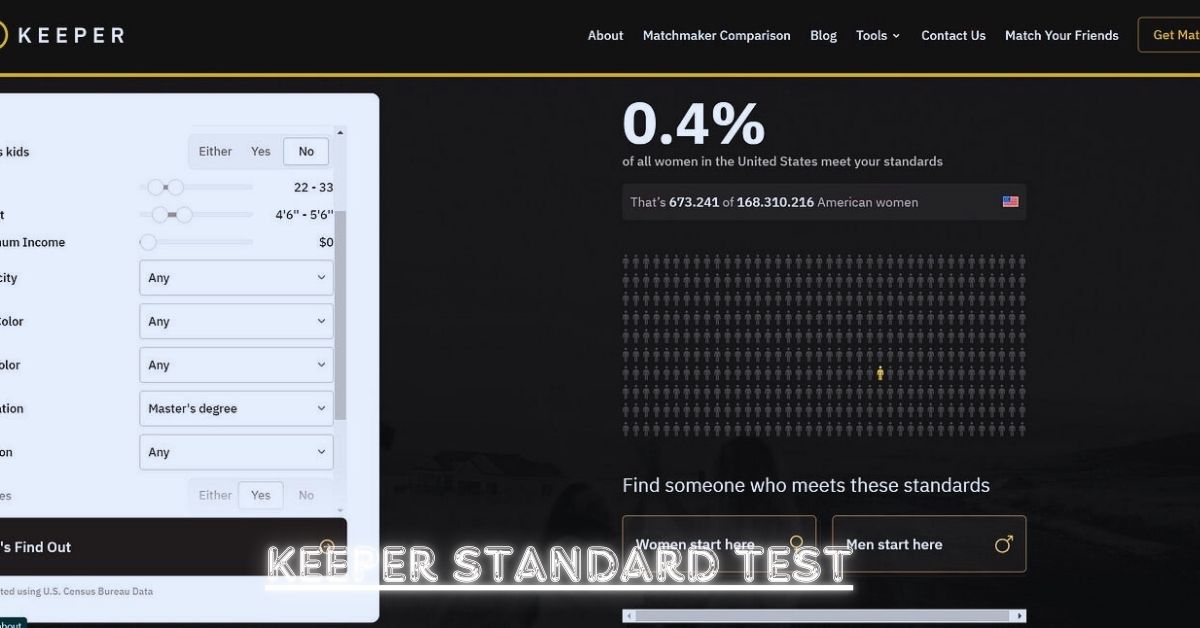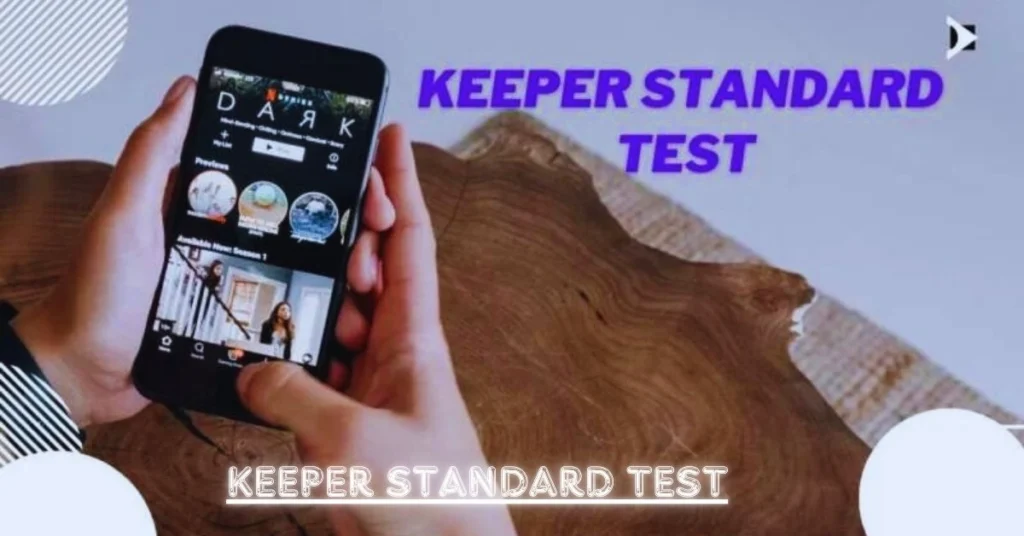Introduction
The Keeper Standard Test is a comprehensive evaluation designed to assess the abilities and performance of individuals in various domains, including leadership, decision-making, and problem-solving. This test is utilized by organizations to ensure they select candidates who align with their standards and possess the necessary skills for success. The test evaluates a range of competencies that are essential for effective leadership and management roles.
History and Background
The Keeper Standard Test was developed in the early 2000s by Dr. Richard Branson, a renowned psychologist specializing in organizational behavior. Dr. Branson’s objective was to create a standardized assessment tool that could provide valuable insights into an individual’s potential for leadership and their ability to handle complex situations. The test has since evolved and gained widespread recognition for its accuracy and reliability.
Purpose of the Keeper Standard Test
The primary purpose of the Keeper Standard Test is to evaluate candidates’ suitability for various roles within an organization. It aims to measure essential skills such as strategic thinking, adaptability, and emotional intelligence. The test provides a comprehensive analysis of a candidate’s strengths and areas for improvement, helping organizations make informed decisions about hiring and promotion.
Structure of the Test
The Keeper Standard Test consists of several sections, each designed to assess different competencies. These sections include:
Leadership Abilities
This section evaluates a candidate’s capacity to lead and inspire a team. It assesses skills such as motivation, delegation, and conflict resolution. Candidates are presented with scenarios that require them to demonstrate their leadership approach and decision-making skills.
Problem-Solving Skills
In this section, candidates are tested on their ability to analyze complex problems and develop effective solutions. They are given case studies and real-world scenarios to solve, showcasing their analytical and critical thinking skills.
Emotional Intelligence
Emotional intelligence is crucial for successful leadership and management. This section measures candidates’ ability to understand and manage their emotions, as well as their empathy towards others. It includes questions on handling interpersonal relationships and managing stress.
Strategic Thinking
Strategic thinking involves the ability to plan and execute long-term goals effectively. Candidates are assessed on their ability to develop and implement strategies that align with organizational objectives. This section includes exercises on strategic planning and vision development.
Adaptability and Flexibility
The ability to adapt to changing circumstances is vital in today’s dynamic work environment. This section evaluates candidates’ flexibility and openness to new ideas. Candidates are presented with scenarios that test their ability to adjust their approach in response to changing conditions.
Scoring and Interpretation
The Keeper Standard Test is scored based on a combination of multiple-choice questions, situational judgments, and written responses. Each section is assigned a specific weight, and the overall score reflects the candidate’s proficiency in various competencies. The test results are analyzed to provide a comprehensive profile of the candidate’s strengths and areas for development.
Applications in Organizations
Organizations use the Keeper Standard Test for various purposes, including:
Hiring Decisions
The test helps organizations identify candidates who possess the necessary skills and attributes for specific
roles. By evaluating candidates through a standardized assessment, organizations can make more informed hiring decisions and select individuals who align with their values and requirements.
Employee Development
The Keeper Standard Test is also used for employee development and career progression. By identifying areas where employees may need further training or support, organizations can create targeted development programs to enhance their skills and performance.
Leadership Training
For leadership development programs, the Keeper Standard Test provides valuable insights into potential leaders’ abilities. Organizations can use the test results to tailor leadership training and development initiatives, ensuring that future leaders are well-prepared for their roles.
Succession Planning
Succession planning involves preparing for future leadership transitions within an organization. The Keeper Standard Test helps identify high-potential employees who can step into key roles in the future. By assessing candidates’ readiness and potential, organizations can plan for smooth leadership transitions.
Benefits of the Keeper Standard Test
The Keeper Standard Test offers several benefits to organizations and candidates alike:
Objective Assessment
The test provides an objective measure of a candidate’s abilities and potential. By using a standardized assessment tool, organizations can reduce biases and ensure that hiring and promotion decisions are based on merit.
Comprehensive Evaluation
With its multi-faceted approach, the Keeper Standard Test offers a comprehensive evaluation of candidates’ skills and attributes. This holistic assessment helps organizations gain a thorough understanding of each candidate’s strengths and areas for improvement.
Enhanced Decision-Making
By providing detailed insights into candidates’ competencies, the Keeper Standard Test enhances decision-making processes. Organizations can make more informed choices about hiring, development, and succession planning.
Improved Employee Development
The test’s focus on identifying areas for improvement helps organizations design effective employee development programs. By addressing specific skill gaps, organizations can foster growth and enhance overall performance.
Limitations of the Keeper Standard Test
While the Keeper Standard Test is a valuable tool, it is not without limitations. Some of the challenges associated with the test include:
Test Anxiety
Candidates may experience test anxiety, which can affect their performance and skew the results. Organizations need to consider this factor and interpret test results within the broader context of each candidate’s overall performance.
Cultural Bias
As with any standardized test, there is a potential for cultural bias. The test may not fully account for cultural differences, which can impact candidates’ performance. Organizations should be aware of this and ensure that the test is used in conjunction with other assessment methods.
Overemphasis on Test Results
While the Keeper Standard Test provides valuable insights, it should not be the sole factor in decision-making. Organizations should consider test results alongside other factors, such as experience, qualifications, and interviews.
Future Developments and Trends
As the workplace continues to evolve, so too will the Keeper Standard Test. Future developments may include:
Integration with Technology
Advancements in technology may lead to the integration of the Keeper Standard Test with digital platforms and tools. This could enhance the test’s accessibility and streamline the assessment process.
Customization and Personalization
Organizations may seek to customize the test to better align with their specific needs and values. Personalized assessments could provide even more accurate insights into candidates’ suitability for various roles.
Focus on Soft Skills
There may be an increased emphasis on evaluating soft skills, such as creativity and resilience, in addition to traditional competencies. This shift could reflect the growing importance of these skills in today’s work environment.
Conclusion
The Keeper Standard Tests is a robust and reliable tool for assessing candidates’ abilities and potential. With its comprehensive evaluation of leadership, problem-solving, emotional intelligence, strategic thinking, and adaptability, the test provides valuable insights for organizations in hiring, development, and succession planning. While there are limitations to consider, the benefits of the test make it a valuable asset in the recruitment and development process. As the workplace evolves, the Keeper Standard Test will continue to adapt, offering even more effective and relevant assessments for organizations and candidates alike.
Read More: Authentic Montreal-Style Bagels at Spread Bagelry






